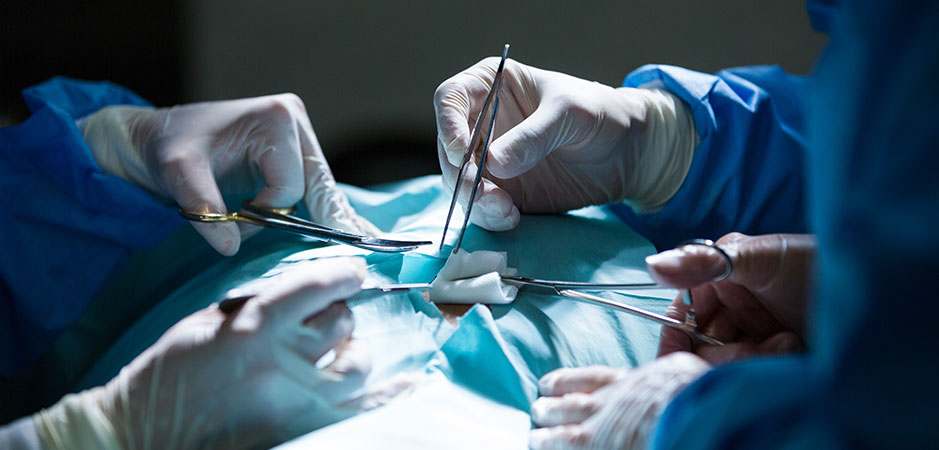Trans-Catheter Aortic Valve Replacement (TAVR) is a minimally invasive procedure of surgery.
The TAVR Procedure is basically used to replace a narrowed aortic valve, which fails to open properly. The clinical condition is known as Aortic Valve Stenosis.
The TAVI Procedure can act as a solution for those who are diagnosed with an intermediate or high risk of surgical aortic valve replacement. And that’s where, it primarily makes a difference with open heart surgery.
Trans-catheter Aortic Valve Implantation (TAVI) also holds true and valuable for patients who cannot undergo an open heart surgery. And needless to mention, it needs repeated consultation with multidisciplinary group of medical and surgical practitioners.
The best treatment option for the concerned individual is then decided accordingly.
TAVI or TAVR procedure, can cure the stenosis of the aortic valve to a great extent and improve the blood flow. Also it has been found to increase the chance of survival to a great extent.
In this article, we are going to have an in depth discussion regarding the same, with special reference to how it differs from an open heart surgery.
The Basic Outline of the Trans-Catheter Procedure
The aortic valve basically opens to pump out the blood to flow out on the left pumping chamber of the human heart.
In case of Aortic Valve Stenosis, the blood flow becomes disrupted because the valve becomes stiff and fails to open up. In a TAVI Procedure, the doctors usually inserts a catheter channel through the femoral artery, up to the aortic valve.
The valve is then accessed through a very small incision which is minimally invasive. And it happens from the chest wall, through the apex of the heart. Once the catheter is placed, a new valve is deployed by the surgeon team within the old one.
The blood flow then starts to restore once again. Eventually, the heart becomes functional once again. That is how, a TAVI valve replacement takes place.
What is the Need of a TAVR Operation?
The eventual question which arises is why you should need a TAVI implantation or TAVR surgery. And in this segment, we will discuss about that only. In fact there are a lot of reason involved, to get a TAVI treatment done.
Aortic valve stenosis occurs when thickening and calcification of the aortic valve takes place. This eventually makes the valve stiff and restricts the flow of blood. As a result, the entire blood circulation system inside the human body faces severe disturbance.
As a result of aortic stenosis, the person concerned may face chest pain, fatigue, fainting, leg swelling, and several other complications. In fact situation may lead to adverse consequences, including cardiac arrest, followed by death.
Under such circumstance, a TAVR or TAVI operation becomes he need of the hour. Unlike open heart surgery, a TAVI Procedure is more advanced, minimally invasive, and the perfect solution for aortic stenosis.
In comparison to open heart surgery, this happens to be more scientific and advanced.
Who Can Benefit From a TAVI operation?
A TAVI procedure can be the best fit for someone who are suffering from the fellow issues:
- A person who encountered aortic stenosis with all symptoms and signs.
- The person have an existing biological tissue valve which is no more in the functioning state.
- A person who bears high risk or cannot be subjected to open heart surgery.
Under all these circumstances, the person concerned must be subjected to a TAVI Procedure. Being minimally invasive, in incurs least bleeding, and involves extreme low risk. In fact, this can be extremely beneficial and hazardless, in comparison to an open heart surgery.
What to Expect from a TAVI Surgery?

Trans Catheter Aortic Valve Implantation or TAVI procedure, involves replacement of your damaged aortic valve with that of an artificially
prepared one from cow or pig’s heart tissue. Often, a valve may be placed in an existing artificial tissue valve which is no longer working.
The entire process of a TAVI surgery can be briefed in the following steps:
1) Before the Surgery
Before starting off with the TAVI procedure, you will be evaluated and diagnosed to figure out whether you have any risk factors or not regarding a TAVI surgery.
Proper medications and precautions will be suggested to you by your doctor. You need to follow that mandatorily and prepare for your surgery.
2) During the Surgery
During the TAVI procedure, you will be provided with a sedative first. Often, a general anesthesia is also applied, depending on the intensity of the case. One of the member from the treatment team will provide medication through Intra Venous process, to prevent blood clot.
In the next step, the treatment team checks the blood pressure and thee cardiac rate. This is to diagnose, if there are any changes and if it can be managed by treatment, before proceeding further with the TAVI procedure.
The surgeon may access through the blood vessel in your leg or a minor incision in your chest, to reach your heart. In fact, there are several other ways that your interventional cardiologist may opt for to access your heart.
A hollow tube called catheter is now inserted through the channel created. Through advanced imaging techniques, the doctor may guide the catheter through the channel and connect to the heart and the aortic valve.
In the next step of TAVI procedure, the new valve is then placed and positioned through the channel created. A balloon is then inflated on the tip of the catheter.
This helps to inflate the new valve and take its shape accordingly. In some cases, the valve inflates naturally without the balloon as well. Once the valve is placed successfully, the catheter is removed.
3) Post the Surgery
Once you are subjected through the TAVI procedure, you need to spend the night at the Intensive Care Unit (ICU). Your team of doctors will consistently monitor you and make sure if there are any complication, or issues taking place or not.
Depending on the situation, you may need to spend five days or more in ICU.
Once you are released from the nursing home, you need complete bed rest as prescribed by your doctor. As a part of the TAVI procedure, you will be needing to take frequent follow-ups with your medical practitioner.
Your doctor will diagnose you and figure out if there are any sign of worsening or degeneration taking place.
To prevent blood clot, your doctor will suggest you certain medications, including dietary plan. You need to take that as prescribed. Make sure, a single trace of negligence can invite a lot of adverse complication. So abide by the instructions as prescribed.
As a part of the post-surgery phase of TAVI procedure, oral hygiene is again an essential criteria. The freshly planted aortic valve bears a tendency to get infected with bacteria.
And the bacteria from your mouth can easily affect the valve. So, apart from taking regular oral hygiene methods, it is also suggested to undergo routine oral therapies as well.
Thus, a TAVI procedure, always act as a minimally invasive procedure with least risk and hassle. In comparison to an open heart surgery, it involves less bleeding and extremely low risk.
How is TAVI Acceptable over Open Heart Surgery?
As the discussion we had till now, it renders a clear picture about the process and execution of a TAVI procedure. The reason why TAVI is accepted over open heart surgery, can be briefed as:
- TAVI involves minimal invasion, as short as an incision.
- Results are comparable with the traditional open heart surgery.
- TAVI is more scientific, advances and suggested globally by reputed surgeons, in comparison to open heart surgery.
- The mortality rate in TAVI is extremely less in comparison to open heart surgery.
- Least bleeding takes place in a TAVI surgery, while open heart surgery can involve severe blood loss.
- An open heart surgery can involve high risk, especially for senior citizen, but a TAVI surgery is way more safe.
- TAVI procedure takes much less time, and patient can regain to normal life, post a couple of weeks.
And in this way, TAVI is gaining acceptance over open heart surgery for severe degenerative arotic stenosis.
The Bottom Line
As the discussion proceeded till now, it rendered you a vivid idea about why a TAVI procedure, is always accepted prior to an open heart surgery.
Hopefully you liked it, and found it helpful enough with all the vital information. Feel free to give it a second read if you want.
Also feel free to share the word as well in your circle. Let the advancement of technology in cardiac sciences make way to a better future in the healthcare sector.
Wish you stay at the pink of your health.

